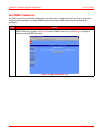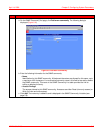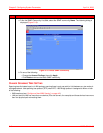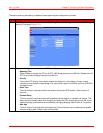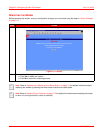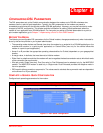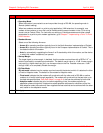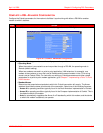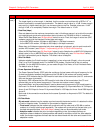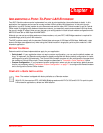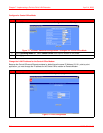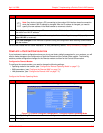
Chapter 6: Configuring DSL Parameters April 14, 2006
6-2 MM70xG2-UM-03
2 Configure the following parameters as directed by your service provider:
• Operating Mode
When the modem is connected to a service provider through a DSLAM, the operating mode is
Remote (default setting).
When two modems are used in a point-to-point application (LAN extension, for example), one
modem at the customer or user site is set to Remote and the second modem in the CO or wiring
closet is set to Central-Office. For instruction on setting up G.shdsl parameters and other related
parameters for a point-to-point modem application, go to Chapter 7: Implementing a Point-To-Point
LAN Extension.
• Standard Annex
Select one of the following Annexes:
– Annex-A for operating conditions typically found in the North American implementation of G.shdsl
– Annex-B for operating conditions typically found in the European implementation of G.shdsl. This is
the default mode for the modem.
– Auto for automatically negotiating the Annex A or B standard by which this modem, and the device
to which this modem is attached, can operate.
• Startup Margin
The target signal-to-noise margin, in decibels, that the modem must achieve with a BER of 10
-7
or
better to successfully complete synchronization. The default margin value is -10 dB. A lower margin
may result in a higher data rate, but it can increase noise on the line. Possible values are -10dB
through 10dB, or to completely Disable the margin.
• Bit Rate Mode
Bit rate mode indicates how the modem synchronizes with the device to which it is attached in either
a Fixed or Adaptive mode. The default for the modem is Adaptive mode.
– Fixed mode indicates that the modem will synchronize with the other end (a DSLAM or another
modem) at a fixed bit rate through negotiation. The modem will synchronize at the best rate, up to
the data rate specified (see “Data Rate (kbps)” on page 6-4), that can be achieved by both ends.
– Adaptive mode indicates that prior to modem negotiating a rate, the modem performs an
adaptation phase during which it determines a best possible rate based on conditions of the line.
After adaptive mode, the modem will then negotiate the best rate that can be achieved with the other
end, based on the adaptation results.
3 Click Apply.
Step Action



